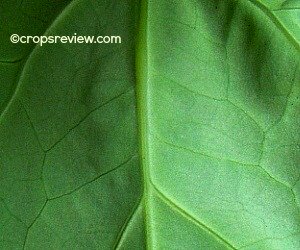The monocots or monocotyledons are plants that comprise a common ancestor and all its descendants.
Also called Monocotyledoneae or Liliopsida, they are flowering plants under phylum Anthophyta (also called Magnoliophyta or Angiospermae) of the kingdom Plantae.
They include the grasses (also referred to as gramineous or graminaceous plants) which may be considered as the most important of all the families of plants (Simpson 2010).
Aside from the monocots, the other members of the angiosperms used to be the traditionally described dicots or dicotyledons.
In other words, the angiospermous plants used to be divided into two distinct classes: the monocotyledons or Monocotyledoneae, and the dicotyledons or Dicotyledoneae.
The dicots therefore comprised of all non-monocot angiosperms.
Monocot-Dicot Classification Modified
It was John Ray (1628-1705), an English naturalist who, in his book Methodus Plantarum Nova published in 1682, first classified the flowering plants into monocots and dicots (ucmp.berkeley.edu 2009).
The classification has been widely adapted although there was uncertainty in applying the terms in some species, particularly those which do not fit exactly into either.
However, based on the overwhelming results of phylogenetic studies (including chemical and molecular analyses), this classification has been modified.

Sylvia S. Mader, in her book Biology (4th ed., 1993), likewise divided the angiosperms into the monocotyledons and dicotyledons based on the number of cotyledons in seeds.
But in a laboratory manual published 2007 (9th ed.) also in her sole authorship, there is no mention anymore of dicots.
Instead, the angiosperms are subdivided therein into two groups, the monocots, and eudicots.
The term eudicots, also called tricolpates, means true dicots and includes mostly the plants that were traditionally described as dicots.
The tricolpates (pollen has three apertures) were first recognized in 1989 but the term was replaced by eudicots in 1991 by J. A. Doyle and C. L. Hotton.
Consequently, the latter term (eudicots) became of wider acceptance (Judd and Olmstead 2004).
Nonetheless, some authorities still express a preference for the term tricolpates because eudicots tend to confuse with dicots.
According to Simpson (2010), the dicots or Dicotyledoneae as traditionally described (all non-monocot plants, two cotyledons) should no longer be used as a formal taxonomic unit.
Based on the classification system formulated by the Angiosperm Phylogeny Group, 2009 (APG III), the angiosperms have been subdivided into the following orders (the taxonomic group with the ending “ales,” consists of various families) and groups of several orders:
- Amborellales
- Nymphaeales
- Austrobaileyales
- Chloranthales
- Magnoliids
- Monocots
- Ceratophyllales
- Eudicots
The Monocotyledons, as a plant grouping, consist of various orders.
In turn, each order (ex.: Poales) consists of various families (ex.: Bromyliaceae, Cyperaceae, Poaceae or Gramineae, etc.).
In addition, the author (Michael George Simpson) gave the following proportionate composition of the two major groups in the angiosperms:
- Monocots – 56,000 species, 22% of all angiosperms
- Eudicots -190,000 species, 75% of all angiosperms
This means that the monocotyledons and eudicotyledons, when combined, comprise 246,000 species, equivalent to 97% of all angiosperms.
Mathematical derivation indicates that the total number of species of angiosperms already described exceeds 250,000 (the exact calculation is 253,608.2).
Certainly, the list is not finite, there are species that still wait to be discovered.
The distinctive characteristics of plants belonging to these two groups of angiosperms are summarized in the table below.
Table M-1. Monocots vs. eudicots (mainly from Mader [2007] and Simpson [2010]).
| Monocots | Eudicots |
| – All species have seeds having one cotyledon | – Two cotyledons* |
| – Leaf venation mostly parallel** | – Leaf venation mostly netlike or reticulate** |
| – Fibrous root system (adventitious roots) | – Typically taproot system (underground roots arise from radicle) |
| – Flower parts usually in threes or multiples of three*** | – Flower parts usually in fours or fives or in multiples of four or five |
| – Usually herbaceous, never woody**** | – Woody or herbaceous |
| – Pollen grain has one furrow or aperture | – Tricolpate pollen grain (pollen grain has 3 furrows or apertures) |
| – Vascular bundles in stem are scattered (cross-sectionally) | – Vascular bundles in stem arranged in a ring (cross-sectionally) |
| – Vascular tissue in root arranged in a ring (cross-sectionally) | – Root xylem is usually star-shaped, the phloem between arms of the star (cross-sectionally) |
| – 22% of all angiosperms | – 75% of all angiosperms |
| -Cuneate, proteinaceous type of sieve tube plastid | – |
* The two cotyledons descriptive of the traditional classification ‘dicots’ also occur in the Coniferales, Cycadales, and Gnetales (Judd and Olmstead 2004) and are now thought as an ancestral feature of the flowering plants and not distinct to any group within.
**Netted or reticulate leaf venation also occurs in some monocotyledons such as in the families Araceae, Dioscoreaceae, and Smilacaceae.
*** Having flower parts in threes (such as 3 or 6 sepals and petals) is also present or common in several non-monocot flowering plants such as in the Laurales, Magnoliales, and Piperales.
****Monocotyledons do not have true vascular cambium, the plant tissue responsible for the production of true wood (secondary xylem). Some monocot plants, such as in Agavaceae and Asphodelaceae, have “anomalous” cambia responsible for secondary growth, but not as a single continuous cylinder and without rings of secondary growth as in true wood (Simpson 2010).
REFERENCES
JUDD WS, OLMSTEAD RG. 2004. A survey of tricolpate (eudicot) phylogenetic relationships. Am. J. Bot. 91(10):1627-1644. Retrieved Oct. 19, 2012, from http://www.amjbot.org/content/91/10/1627.full.
MADER SS. 1993. Biology of Plant Structure and Function (Part 4). In: Biology. 4th ed. Dubuque, Iowa: Wm. C. Brown Publishers. p. 473-536.
MADER SS. 2007. Selected Labs from Lab Manual to Accompany Biology. 9th ed. Dubuque, IA: McGraw-Hill Learning Solutions. p. 171-520.
SIMPSON MG. 2010. Plant Systematics. 2nd ed. Burlington, MA: Elsevier Inc. 740 p.
UCMP.BERKELEY.EDU. 2009. Monocots versus dicots: the two classes of flowering plants. Retrieved Oct. 19, 2012, from http://www.ucmp.berkeley.edu/glossary/gloss8/monocotdicot.html.
